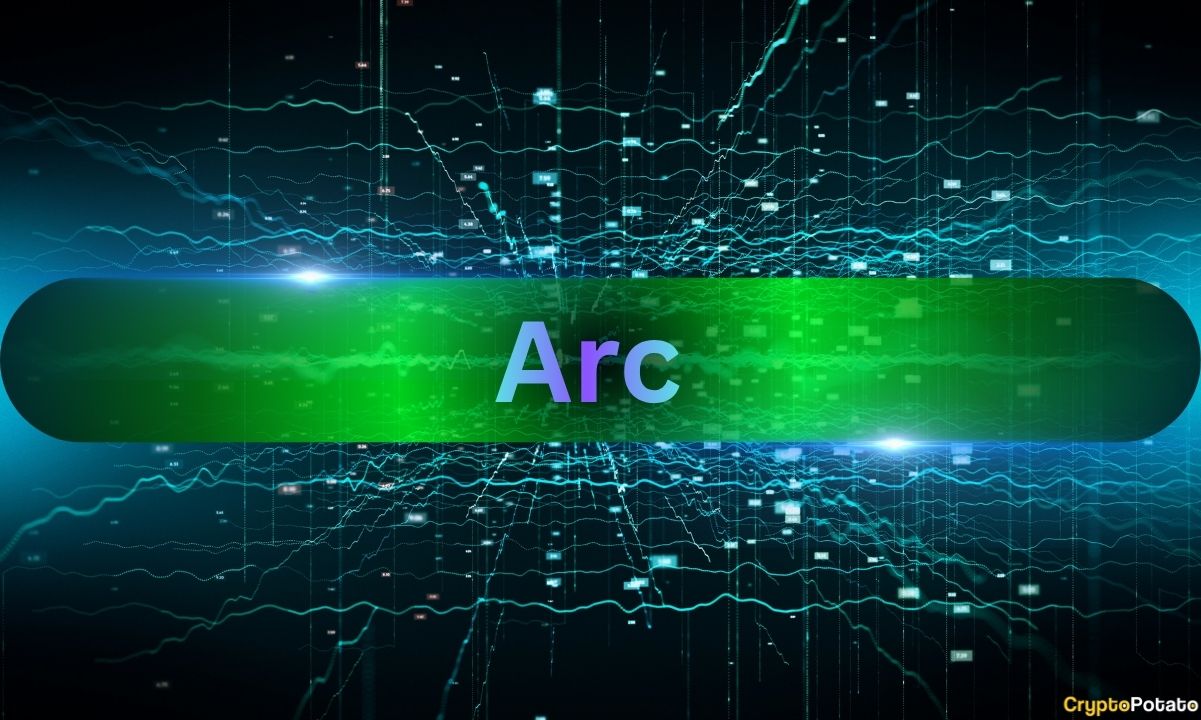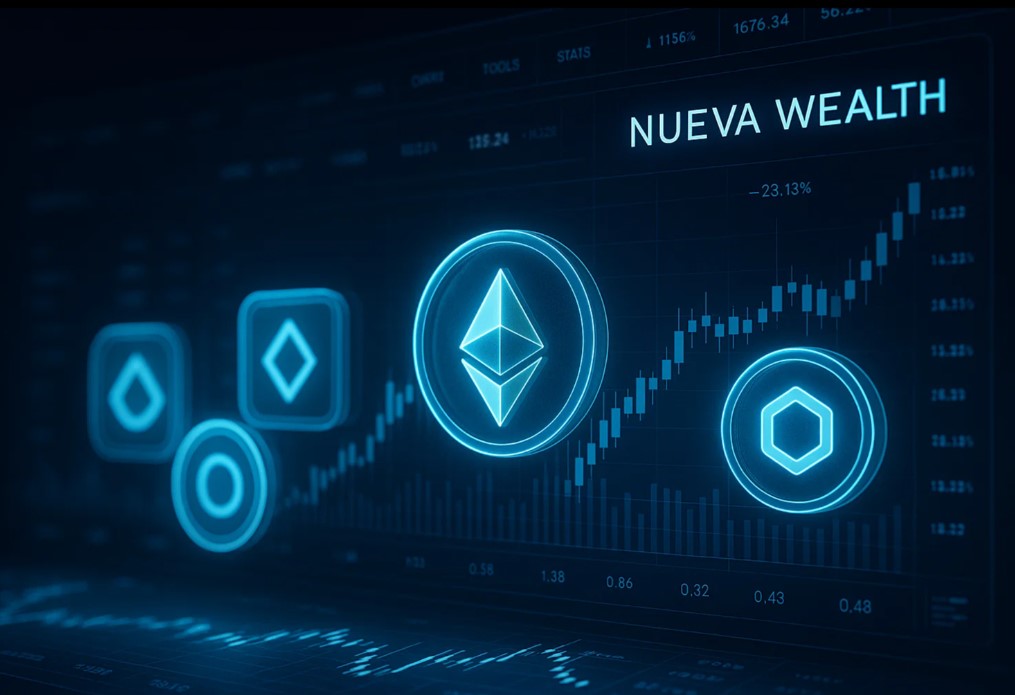AaveLive Feed
Aave breaking news and instant alerts. Crypto Feed's minimalist interface delivers verified headlines, price movements, and protocol updates the moment they happen. Fast, focused, no fluff.
- LIVE
 报告:近期加密市场暴跌致 10 亿美元 sUSDe 循环交易面临风险
报告:近期加密市场暴跌致 10 亿美元 sUSDe 循环交易面临风险ChainCatcher 消息,据 CoinDesk 报道,Sentora Research 报告称,加密市场暴跌后,涉及 Ethena 质押的 USDe(sUSDe)的近 10 亿美元 DeFi 头寸面临风险。暴跌致 DeFi 市场利率大降,sUSDe 循环交易等杠杆策略收益缩水。在 Aave v3 核心版,USDT/USDC 借贷利率分别比 sUSDe 收益高约 2% 和 1.5%,借稳定币杠杆做多 sUSDe 的用户收益为负,借稳定币买 sUSDe 的循环头寸开始亏损。若此情况持续,Aave v3 核心版约 10 亿美元暴露于负利差的头寸或平仓。负利差可能迫使抵押品抛售或去杠杆化,削弱交易场所流动性,引发连锁反应。Sentora 提醒,交易者要关注 Aave 借贷年化收益率与 sUSDe 收益的利差,尤其是持续为负时,以及 USDT...
 Circle’s Arc Blockchain Testnet Goes Live: Over 100 Partners Including Mastercard, Coinbase on Board
Circle’s Arc Blockchain Testnet Goes Live: Over 100 Partners Including Mastercard, Coinbase on BoardUSDC stablecoin issuer Circle has rolled out the public testnet for its payments-focused blockchain network. The company said on Tuesday that more than 100 institutions, including Visa, HSBC, BlackRock, and AI firm Anthropic, are already participating in the testing phase. The testnet will allow developers, financial institutions, and enterprises to deploy, test, and build applications on Arc, which Circle calls an “Economic OS” for the internet. Unveiled in August as an open Layer 1 network, Arc is designed to support developers and companies seeking to bring real-world financial activity on-chain. Circle said the blockchain’s purpose is to facilitate scalable, globally distributed economic activity across borders. The firm described Arc as a system capable of connecting every local market to the global digital economy. Star-Studded Lineup According to the official press release, the early ecosystem already includes organizations from across major regions such as the Americas, Asia, Europe, Africa, and the Middle East. Participants in the testnet collectively manage trillions of dollars in assets and facilitate billions of transactions daily. Circle aims to position Arc as a foundation for stablecoin issuers and tokenized assets such as equities, credit, and money market funds. The firm also plans to use stablecoins as gas tokens on Arc and build native infrastructure for stablecoin swaps and foreign exchange liquidity. Stablecoin issuers from several regions are already joining the testnet, including Forte Securities (AUDF in Australia), Avenia (BRLA in Brazil), JPYC Inc. (JPYC in Japan), BDACS (KRW1 in Korea), Juno (MXNB in Mexico), Coins.PH (PHPC in the Philippines), and Stablecorp (QCAD in Canada). Circle added that it is in discussions with additional issuers of dollar-, euro-, and other fiat-backed stablecoins to expand Arc’s network. The testnet is also drawing interest from developer platforms and blockchain infrastructure providers. Participants include Alchemy, Chainlink, LayerZero, and thirdweb, alongside cross-chain protocols such as Across, Stargate, and Wormhole. Wallet and infrastructure partners include MetaMask, Fireblocks, Ledger, QuickNode, and Blockdaemon, who are helping make Arc accessible to both institutional and retail users. Major market participants in decentralized finance are also testing Arc’s capabilities. Protocols such as Uniswap Labs, Aave, Curve, and Euler Finance are integrating liquidity and lending tools, while centralized exchanges, including Coinbase, Kraken, and Robinhood, are exploring connectivity. The company said market makers such as GSR, Wintermute, Galaxy Digital, and Cumberland are also contributing liquidity support. Beyond digital asset trading, Circle is engaging with global payments and fintech firms to expand Arc’s real-world use cases. Companies like Mastercard, Visa, WorldPay, Brex, Nuvei, and Amazon Web Services are part of the testnet phase. Capital market firms, including Apollo, BNY Mellon, the New York Stock Exchange, and State Street, are also involved. Banks and asset managers participating include Deutsche Bank, HSBC, Goldman Sachs, Standard Chartered, Invesco, and BlackRock. Distributed Governance While Circle is overseeing the initial phase, the company plans for Arc to eventually be operated by a global set of participants, including financial institutions, technology firms, and developers. The roadmap includes expanding validator participation, building transparent governance frameworks, and enabling community input. The long-term goal is for Arc to function as an open, neutral, and collectively managed layer of economic infrastructure for the internet. The latest follows its public listing in June 2025, when the company raised $1.1 billion and achieved a $6.9 billion valuation. The post Circle’s Arc Blockchain Testnet Goes Live: Over 100 Partners Including Mastercard, Coinbase on Board appeared first on CryptoPotato.
 TVL on Kraken’s L2 Ink Surges 3,800% in Less Than Two Weeks
TVL on Kraken’s L2 Ink Surges 3,800% in Less Than Two WeeksInk, a Layer 2 (L2) blockchain launched by U.S. crypto exchange Kraken in December 2024, saw its total value locked (TVL) surge by nearly 3,800% in less than two weeks, climbing from $6.42 million on Oct. 15 to nearly $249 million as of press time.However, data from DefiLlama shows that out of 30 protocols deployed on Ink, more than 97% of this sharp increase came from a single product, Tydro, a non-custodial lending protocol built by the Ink Foundation, as a white label instance of open-source DeFi giant Aave. To continue reading this as well as other DeFi and Web3 news, visit us at thedefiant.io
 Aave Labs Acquires Stable Finance to Expand DeFi Access
Aave Labs Acquires Stable Finance to Expand DeFi AccessAave Labs, the team behind the Aave lending protocol, has acquired Stable Finance, a San Francisco-based fintech startup, according to an Oct. 23 press release.The deal brings Stable Finance founder Mario Baxter Cabrera into Aave Labs as Director of Product, along with the company’s full engineering team. Aave currently has more than $38 billion in total value locked (TVL), making it the largest DeFi protocol, per DeFiLlama.The acquisition highlights Aave Labs’ shift beyond core protocol work toward making decentralized finance (DeFi) more accessible. The team says that, even with strong infrastructure, onboarding and user experience still make DeFi difficult for many users.To continue reading this as well as other DeFi and Web3 news, visit us at thedefiant.io
 The MegaETH interview (w/ Bread)
The MegaETH interview (w/ Bread)Crypto bounces as BTC dominance rises to 60%. The SEC and CFTC aim for crypto regulation by the end of 2025. Democrats and crypto executives meet to discuss a crypto bill. Over 150 crypto ETF filings await review. HYPE leads altcoins after its co-founder appeared on TBPN. Hyperliquid Strategies plans to raise $1b to buy HYPE. Aave DAO proposes a $50m annual token buyback. Robinhood officially lists BNB. FalconX acquires 21Shares. T. Rowe Price files for its first crypto ETF. Coinbase unveils a tool for AI agents to access wallets. HTX is sued by the UK for unlawful crypto promotion. Canada’s Cryptomus exchange is fined CAD 177m. Hackers move $1.8b BTC stolen from LuBian. Farage says he is willing to go to prison to stop the UK CBDC. Russia plans to legalise crypto use in foreign trade.
 Crypto chop continues, Gold drops, DraftKings buys prediction market
Crypto chop continues, Gold drops, DraftKings buys prediction marketCrypto chop continues, tariff headlines dominate. ZEC breaks $300 before falling, leads altcoins. Waller signs Fed’s shift towards embracing crypto. ETH Foundation moves $654m ETH. BlackRock trying to pull in BTC whales to its ETFs. HK approves first SOL ETF. SOL ends support for Saga mobile phone. Galaxy profit jumps 1500% in record quarter. Bealls now accepting crypto payments. Aave outstanding loans hit $25b, to integrate Maple. Groups urge Trump to defend CFPB’s banking rule. Asian exchanges intensify scrutiny of DATs. Kadena winds down ops, KDA drops 60%.
 Maple and Aave Team Up to Bring Institutional Assets to DeFi Lending Markets
Maple and Aave Team Up to Bring Institutional Assets to DeFi Lending MarketsMaple Finance, an on-chain asset manager overseeing more than $3.1 billion, and Aave, the largest decentralized finance (DeFi) lending protocol, announced on Tuesday a strategic partnership to bring institutional-grade assets into Aave’s lending markets.Initial integrations will include syrupUSDT on Aave’s Plasma instance, followed by syrupUSDC on the core market, with additional Maple assets to be added over time, according to a press release viewed by The Defiant. Aave is currently the largest DeFi protocol with a total value locked (TVL) of over $40 billion. The collaboration aims to stabilize borrow demand, improve capital efficiency, and strengthen liquidity within Aave’s variable lending model, according to a press release viewed by The Defiant.To continue reading this as well as other DeFi and Web3 news, visit us at thedefiant.io
 Aave V4 Looks to Turn Fragmented Liquidity into DeFi’s OS, Developers Say
Aave V4 Looks to Turn Fragmented Liquidity into DeFi’s OS, Developers SayAave, the largest lending protocol in the DeFi space, is preparing to change how money flows in DeFi with its upcoming V4. The latest version of Aave creates a system where all deposited funds can be shared across different lending markets, a liquidity structure its developers describe as “DeFi’s operating system.”In the latest research note from Aave’s developers, they explained that the V4 upgrade, which is reportedly scheduled for Q4, introduces a modular "hub-and-spoke" architecture, where "Hubs" centralize liquidity, while "Spokes" are specialized lending markets that connect to these Hubs. Each Spoke can implement its own lending rules and risk parameters, allowing for customized borrowing and lending experiences, the developers wrote. “This approach empowers the broader DeFi community to build on Aave rather than competing with it. Service providers and integrators can create specialized experiences while accessing deep liquidity, expanding innovation within the Aave ecosystem rather than fragmenting it across separate markets,” the article reads.To continue reading this as well as other DeFi and Web3 news, visit us at thedefiant.io
 NuevaWealth for Altcoin CFD Trading – Pros, Cons & Tips
NuevaWealth for Altcoin CFD Trading – Pros, Cons & TipsIntroduction to Altcoin Trading Altcoins are any cryptocurrencies besides Bitcoin. Over the past decade the crypto ecosystem has exploded from a handful of coins to thousands, each trying to solve a specific problem—whether it’s enabling smart contracts (Ethereum), providing fast, low‑fee payments (Solana, Litecoin), powering decentralized finance (Uniswap, Aave), supporting NFTs and gaming (Axie Infinity, Decentraland), or offering privacy (Monero, Zcash). Because many of these projects are still early in their development cycles, their market prices tend to be more volatile than Bitcoin. That volatility creates opportunities for traders who can correctly anticipate short‑term price moves, but it also brings heightened risk of rapid losses. Key concepts to grasp before diving in: Market Capitalization & Liquidity – Larger caps (top 20) usually have tighter spreads and deeper order books, making it easier to enter and exit positions without slippage. Smaller caps can move dramatically on modest trade volumes, which can be attractive for speculative gains but also risky. Tokenomics – Understand the supply model (fixed vs. inflationary), distribution schedule (vesting, staking rewards) and utility of the token. Sudden token releases or protocol upgrades often trigger price spikes or drops. Fundamental Drivers – Project roadmaps, partnership announcements, regulatory news, and community sentiment (Twitter, Reddit, Discord) heavily influence altcoin price dynamics. Technical Analysis Basics – Trend lines, support/resistance zones, moving averages, RSI and MACD are commonly applied to altcoin charts. Given the higher noise, combining several indicators and confirming with volume can improve signal reliability. Risk Management – Set stop‑loss levels, limit leverage, and allocate only a small portion of your portfolio to any single altcoin. Diversification across several projects can smooth out the impact of a single coin’s failure. Regulatory Landscape – Some jurisdictions treat certain altcoins as securities, which can affect exchange listings and legal exposure. Stay informed about the regulatory status of the tokens you trade. By mastering these fundamentals—understanding what each altcoin aims to achieve, how its market behaves, and how to protect capital—you’ll be better equipped to navigate the fast‑paced world of altcoin trading. 1. Why Altcoins Matter Altcoins—cryptocurrencies other than Bitcoin—represent the bulk of the crypto ecosystem. They range from established projects like Ethereum, Solana and Cardano to newer tokens that aim to solve niche problems such as decentralized finance, gaming, or supply‑chain tracking. For many traders, altcoins offer higher volatility than Bitcoin, which can translate into larger short‑term price swings and, consequently, bigger profit opportunities—provided the trader understands the added risk. 2. How Nueva Wealth Handles Altcoins Nueva Wealth treats every cryptocurrency it lists as a CFD (contract‑for‑difference). When you open an altcoin position, you are not buying the token itself; you are speculating on its price movement relative to a fiat or stablecoin denominator. The platform currently offers a curated selection of altcoins, typically the top‑20 by market capitalization, plus a few emerging projects that meet its internal liquidity standards. Key characteristics of the altcoin CFD offering: Fixed spreads – The bid‑ask spread is set in advance and does not change with order size. During periods of extreme market stress, the spread may widen, which can affect entry and exit prices. Leverage options – Most altcoins are available with up to 1:10 leverage. This means a $100 margin can control a $1,000 notional position, magnifying both gains and losses. No token custody – Because the contracts are settled in fiat or a stablecoin, you never receive the underlying altcoin in a wallet. This eliminates concerns about private‑key management but also means you cannot use the token for staking, governance voting, or other on‑chain utilities. Overnight financing – Holding a leveraged altcoin position past the daily settlement window incurs a financing charge calculated on the notional value of the contract. 3. Advantages for Altcoin Traders Speed of Execution – Order latency is measured in sub‑seconds, which is valuable when trading fast‑moving altcoins where price changes can happen in milliseconds. Unified Dashboard – Altcoins sit alongside forex, stocks and commodities, allowing you to shift capital between asset classes without leaving the app. Risk Management Tools – Stop‑loss and trailing‑stop orders are available for each altcoin CFD, giving you a way to limit downside exposure. No Custodial Hassles – Since you never hold the actual token, you avoid the complexities of securing private keys, managing wallets, or dealing with network congestion when transferring coins. 4. Limitations and Risks Lack of Ownership – Without holding the real token, you cannot benefit from airdrops, staking rewards, or governance participation that many altcoin projects offer. Leverage‑Induced Volatility – Altcoins already exhibit high price swings; adding leverage can quickly erode a margin balance if the market moves against you. Liquidity Constraints – While Nueva Wealth selects altcoins with sufficient liquidity, the CFD market depth can be thinner than the spot market on major exchanges. Slippage may occur on large orders. Regulatory Ambiguity – Operating under an offshore licence, the platform does not fall under EU or UK investor‑protection regimes. In the event of insolvency, there is no statutory compensation for deposited funds. Limited Educational Content – The platform’s built‑in learning resources cover basic CFD concepts but do not delve deeply into altcoin fundamentals, tokenomics, or project‑specific risk factors. Traders need to conduct independent research. 5. Practical Tips for Using Nueva Wealth with Altcoins Start Small – Allocate only a modest portion of your capital (e.g., ≤ 10 %) to leveraged altcoin positions until you become comfortable with the platform’s execution and fee structure. Set Protective Stops – Use stop‑loss orders at a level that reflects the altcoin’s typical volatility; consider a trailing‑stop to lock in gains if the price moves favorably. Monitor Financing Costs – If you plan to hold a position overnight, calculate the daily financing charge and factor it into your profitability analysis. Cross‑Check Liquidity – Before entering a sizable trade, compare the quoted spread on Nueva Wealth with spot market spreads on major exchanges (e.g., Binance, Coinbase). A significantly wider spread may indicate lower CFD liquidity. Do Independent Research – Review the altcoin’s whitepaper, roadmap, developer activity, and community sentiment. CFD exposure does not replace the need for fundamental analysis. 6. Frequently Asked Questions Specific to Altcoins Do I earn staking rewards on altcoins traded through Nueva Wealth?No. Because the contracts are settled in fiat or stablecoins, you do not hold the actual token and therefore cannot participate in staking or delegation programs. Can I trade any altcoin I want?Only the altcoins that Nueva Wealth lists are available as CFDs. The selection is limited to assets that meet the platform’s liquidity and compliance criteria. What happens if an altcoin gets delisted on the spot market?If the underlying token is removed from major exchanges, Nueva Wealth may suspend CFD trading for that asset. Existing positions could be closed automatically, and any resulting profit or loss would be settled in fiat. Are there any tax implications specific to CFD altcoin trading?Tax treatment varies by jurisdiction. Generally, CFD profits are considered capital gains or income, depending on local law. Because you never own the token, you do not report a “crypto acquisition” event, but you do need to declare realized gains or losses from CFD closures. Consult a tax professional for guidance. 7. Verdict – Is Nueva Wealth Good for Altcoin Trading? Nueva Wealth offers a fast, mobile‑friendly environment that makes it easy to speculate on a curated list of altcoins. Its strengths lie in rapid order execution, built‑in risk‑management tools and the convenience of handling multiple asset classes from a single interface. For experienced traders who are comfortable with leveraged speculation, understand the risks of CFD products, and are primarily interested in short‑term price movements, Nueva Wealth can be a suitable venue for altcoin exposure. For newcomers or those who wish to hold altcoins long‑term, earn staking rewards, or rely on regulatory protections, a traditional spot exchange or a regulated broker that offers direct token custody may be a better fit. Ultimately, the decision hinges on your trading objectives, risk tolerance, and willingness to supplement the platform’s limited educational content with independent research. If you choose to proceed, start with a small allocation, use protective stops, and keep a close eye on financing costs and liquidity conditions.
 CRYPTO FALLS, STOCKS HIT ANOTHER ATH, SOL DEFI COINS SOAR
CRYPTO FALLS, STOCKS HIT ANOTHER ATH, SOL DEFI COINS SOARAVAX & NEAR lead L1s, most alts fall. XRP, DOGE ETF debut, $50m day 1 combined volume. MetaMask token coming ‘very soon’. Michigan BTC bill moves forward after delay. Brera Holdings launches $300m SOL DAT. ETH Fusaka upgrade scheduled for December. Plasma TGE set for 25 September. Circle facing intense competition: JP Morgan. PYUSD expands to Tron, Aave and other blockchains. Avantis adds top tech stocks on chain, allows 25x lev. ASTER keeps rising, hits $3.8n FDV. ASTER hits $310m spot volume on TGE launch. BTC trading firm CEO pleads guilty to $200m ponzi. Canada seizes $40m crypto from TradeOgre.
